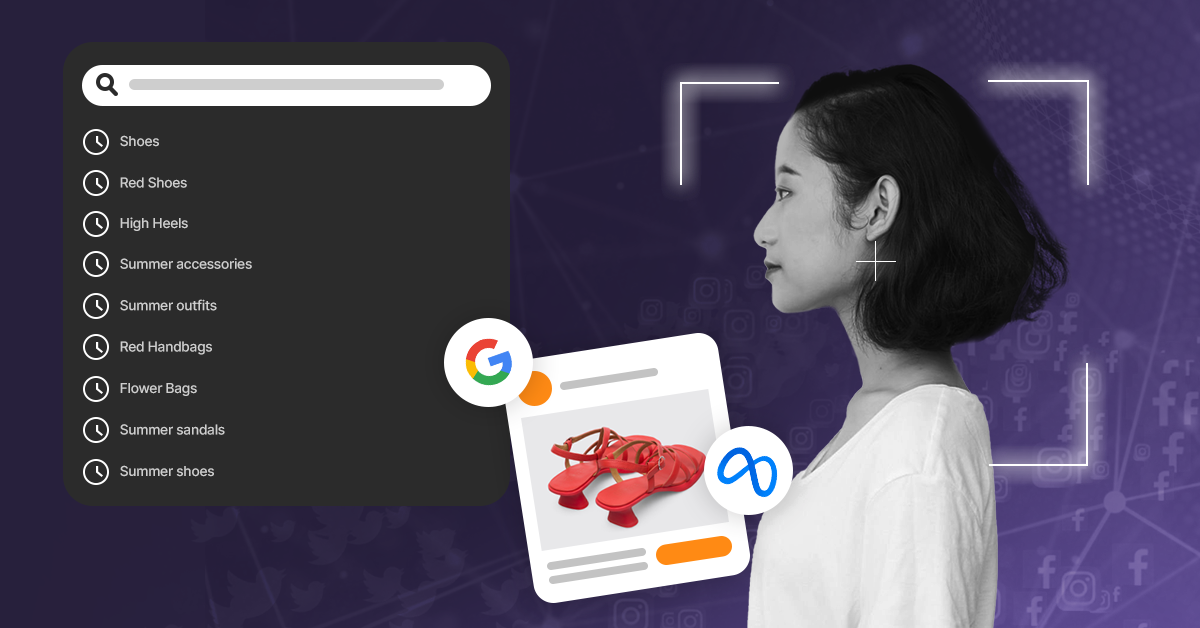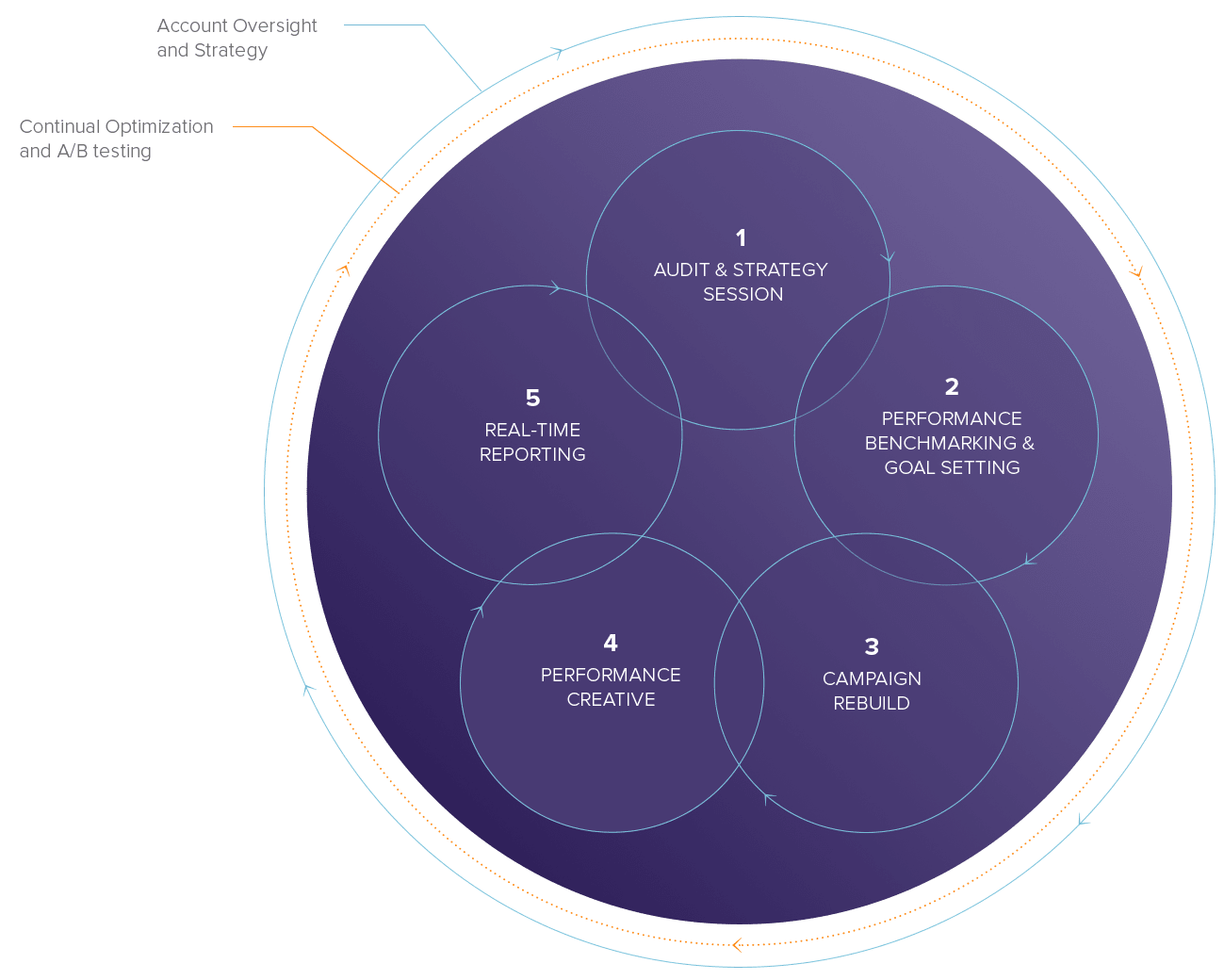Maximize Retargeting and Audience Creation with First-Party Data

With the constant evolution of digital privacy laws and shift towards a “cookieless” digital world, the importance of first-party data collection and leveraging it strategically has become one of the most important factors in any sustainable digital marketing strategy.
Despite this being a hot topic for a few years now, many businesses are still scrambling to create an ecosystem which enables them to store, track, share and leverage first-party data across business units and digital channels. In a surprising move, Google recently announced they are pushing back third-party cookie deprecation until early 2025, which resulted in a communal sigh of relief among many marketers as it buys us a bit of time. This should not be seen as a reason to delay first-party data initiatives, rather it should serve as a reminder to get ahead of things before it is too late!
This blog will cover the basics of first-party data, a few core benefits to adopting first-party data and we will cap it off with some strategic use cases on how to leverage first-party data for remarketing and audience creation. Sound good? Let’s get into it.
What is First-Party Data?
Before we go too deep, let’s do a quick refresher on what First-Party data is. At its most basic, first-party data is any data collected by a business directly from its customers or user base through owned assets. This can consist of:
Purchase History: this can include detailed purchase information from online, or physical point-of-sale terminals.
Website or app anlaytics: the most common data points include demographics, conversion data, pageviews and engagement metrics.
Email/SMS lists: lists could consist of newsletter subscribers, prospects, current customers etc.
Call Center/Phone Call Data: this can include information on the source someone called from (online and offline), the nature of the phone call etc.
Social Media Interactions: this can consist of likes, shares, followers, chat.
CRM Data: most CRM’s store detailed information on how a customer has interreacted with a business throughout their entire lifecycle. Data will often include a full history of online touchpoints, purchase history, interactions with customer service/sales and a detailed breakdown of known customer information/demographics.
What are the benefits of a First-Party Data strategy?
Although the exact benefits will vary by business and vertical, we have distilled things down into 6 main benefits that apply for most businesses.
1. You own first-party data: Unlike second and third-party data, you retain full ownership and control of your first-party data. While considering the continued risks of second-party data and deprecation of third-party data, reliance on first-party data is naturally risk averse and future proof.
2. Privacy laws & compliance: Regulations like GDPR and CCPA continue to evolve which puts tremendous pressure on business to know exactly how their data is being sourced, stored, and ultimately leveraged. By focusing on first-party data you help mitigate the risk of non-compliance.
3. 1 to 1 communications & ad personalization: It is not a secret that the digital world is becoming increasingly competitive and attention spans of users are being pulled in all directions. By leveraging first-party data you can curate highly targeted creative and messaging that appeals to a specific user which helps cut through the noise of mass communications.
4. Ad platforms are unpredictable: It is rare for a day to go by without one of the large media platforms announcing changes to targeting options. A few highlights are Google abolishing Similar Audiences back in August 2023, LinkedIn discontinued lookalike audiences in February 2024, and META announced discontinuing of detailed targeted options in March 2024. By focusing on first-party data you reduce your reliance on platform-curated audiences which adds predictability to your targeting.
5. Full funnel reporting: Most industries have a complex path to purchase that may transcend multiple channels, touchpoints and even move from online to offline. By leveraging first-party sales data and offline conversion tracking, a business can “close the loop” and map actual business results to the specific digital touchpoints.
6. Cost Efficiencies: In a large study, Google found that businesses who leverage first-party data achieved up to a 2.9X lift in revenue and 1.5X increase in cost savings. On the surface those stats are almost hard to believe, but when you factor in things like increased custom retention, reduced acquisition costs and personalized messaging, similar results are achievable for any business!
Using First-Party Data for Effective Retargeting and Audience Creation
Now that we covered the basics and associated benefits, let’s dive into some strategic examples of how businesses can leverage first party-data to create effective retargeting campaigns and audiences to leverage in paid media platforms.
Cross Sell
For businesses who offer a wide range of services or products, the use of first-party data is an incredible way to cross sell their existing customer base online.
A good example of this is a telecommunications provider who offers Internet, TV, Home Phone and Mobile Services. Let’s assume they have a customer who has TV and Internet Services but not Mobile. By leveraging first-party customer data, the business can create a highly targeted audience and creative which speaks to the user purchasing Mobile Services. “Add Mobile Services to your monthly plan for $XXX”.
A key consideration here is to do correlation analysis on your existing customer base to identify which services or goods are most likely to be purchased together.
Upsell
This most common application here is for businesses who rely on subscriptions or tiered service offerings.
A good example is a mobile application which offers an initial trial period, monthly and annual package. By using first-party data the business could create 3 unique buckets of audiences to target for upselling.
- First, you could target all trial-based users with a message to become a paid subscriber.
- Second, you could target all monthly subscribers to become annual.
- Lastly, you could target all annual subscribers close to expiration to renew.
Repeat Purchase
For businesses who have a cyclical purchase cycle or offering this is a great way to increase Customer Lifetime Value (LTV) and increase customer retention.
An example here could be an automotive company who leases their vehicles. By using first-party data they can create a predictable cadence on when they want to target people ahead of the end of their lease. Messaging here would often consist of a loyalty offer of specific incentive to spur the repeat purchase.
Another use case here could be for a dental office for routine care services, like teeth cleaning, which they recommend every 6 months. By using first-party data they can create audiences for everyone who had the most recent cleaning 5+ months ago and, for example, serve a special offer message for their next cleaning.
In both situations above, a key consideration is knowing what timeframe is ideal to reach out while ensuring complimentary messaging across other tactics, like email or direct mail.
Value-Based Bidding
VBB is an incredible way to leverage first-party sales data and machine learning in Google Ads to optimize campaigns towards the highest revenue possible, rather than the highest volume of conversions.
Let’s imagine you are a contactor who offers a very specific service that is worth $1,000 and once someone reaches your website, they can contact you via live chat, phone call or form fill. Using first-party sales data you can calculate your implied value business revenue generated for each touchpoint. For example; if 1 of 10 people convert by phone, that means every form has an implied value of $100. If 1 of 20 live chats converts, the implied value per chat is $50. If 1 of 2 people who fill out a form convert, the implied value per form is $500. You can upload these values into Google Ads, which would help Google optimize towards users who are more likely to fill out a form given it has the highest potential value.
Lookalike Audiences
Using first-party data, a business can create highly targeted audience lists for customers who share similar demographics, usage behaviour or end value to the business. These lists can be uploaded into paid media platforms and used to target users or “lookalikes” that share similar characteristics to those within the list. LAL’s tend to perform very well as they enhanced machine learning and real business data instead of making assumptions about who your audience is.
A good example here is a travel agency who offers a wide range of tours and packages. By creating a dedicated list for each tour, they can create lookalike audiences to effectively target a wide range of users with the right package. For example, those who have purchased a Contiki/Party style tour likely have much in common, but they likely do not have much in common with people who are looking for an adult-only 5-star all-inclusive resort.
Predictive Audiences
Predictive audiences in Google Anlaytics 4 combine machine learning and observable user behaviour to create detailed audiences containing users who are most likely to complete a desired action on your website.
GA4 has a few suggested Predictive audiences, the most commonly used is “Likely 7-day purchasers”. For this audience Google uses a combination of inputs, including time on site, products viewed, page engagement, add to cart etc., to create a list of users who are most likely to purchase in the immediate future. A business can use this to serve highly targeted ads that include a time sensitive promotion to spur the purchase decision. In this example, the opposite also applies. You could use the audience to exclude showing ads to those who are most likely to purchase in favor of placing those media dollars, behind users who need more encouragement.
Exclusions Audiences
First-party data is in many ways the most powerful way to eliminate (or greatly reduce) wasted media spend; think of this as the opposite of retargeting. Exclusion audiences can come in many shapes and forms and should be carefully evaluated based on the campaign’s intent.
One of the most powerful forms of exclusions applies to businesses who are hesitant to bid on their own brand term in Google search, in fear that they would be “wasting” media spend on existing customers. To work around this, you can upload a list of all current customers and exclude them from being shown branded ads. This will effectively focus branded spend on net new customers.
Another good example of exclusion audiences is actively excluding users who have visited a career section (job seeking) or support section of a website.
One last example here is to have audiences for low engagement users and exclude them from all retargeting efforts. By using GA4 metrics like time on site or scroll depth, you can quickly exclude users who are not engaged and most likely not to have interest in your services, helping to focus spend on those who are more likely to convert.
Wrapping Up
- Despite the undeniable importance, many businesses are lagging on creating a first-party data ecosystem and strategy.
- First-party data comes in many forms, all of which are owned by a business.
- With the deprecation of third-party cookies, the need for first-party data will continue to grow.
- Some of the main benefits of first-party data include: privacy compliance, ad personalization, predictability, full funnel reporting and cost efficiencies.
- First-party data allows businesses to create strategic retargeting campaigns across the entire purchase funnel.
- First-party data allows businesses to create suppression audiences to limit inefficient media spend.
If you want to learn more about first-party data and how OpenMoves can help you create a sustainable strategy, feel free to contact us today.












